How Barbie and Other Dolls Can Give Us Postural and Personal Inspiration
This summer, with blockbuster success, Barbie is front and center! And yes, I did see the movie. I usually use dolls to talk about our physical characteristics, but their intended function is to teach emotional and social skills such as friendship, parenting, and play. Barbie the movie certainly emphasizes this aspect of the iconic doll in no subtle way!
This blog post looks to dolls for some postural lessons, and also some emotional ones. Research such as a 2017 New Zealand study shows that posture connects with both our physical and emotional stance, and in our company we have come to embrace the deep relationship between posture and emotional health. So, over to Barbie, Wonder Woman, and friends. . .
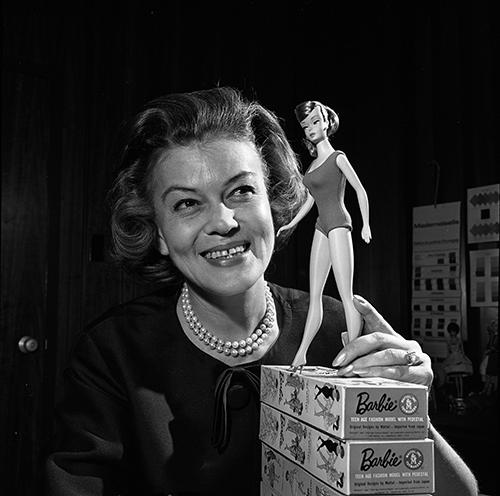
Barbie, right now, is the most famous doll in the world. What can she, and other dolls, teach us about posture? Barbie is posed here with her first clothing designer, Charlotte Johnson, in 1965. Image: Wikimedia
Barbie
Launched at the NYC American International Toy Fair in 1959, Barbie was a single female archetype, white, fashionable, and slender. Over the decades, Barbie has reflected changing times; not just in fashion, but, more importantly, in how women’s lives have changed, and in representing the diversity of our population. For all its flaws, I think the film celebrated this while acknowledging how far there is to go. . .
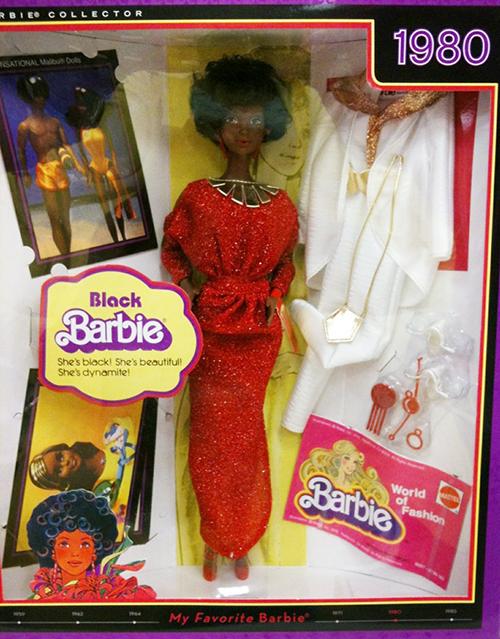
This second Black Barbie was introduced in 1980, but still had Caucasian features. Hispanic Barbies were also introduced that year. Authentically styled African-American dolls joined the range from 2009. Image: Wikimedia
It strikes me that Barbie has, over the years, maintained an upright, open stance with a healthy posterior shoulder position and a tall neck. Her posture is closer to that of the children who play with her than their parents’, as in our culture, by adulthood, we are likely to have adopted a slumped posture.

Young children instinctively sit and stack their spine in a healthy alignment. In later years, poor role models and time spent sitting on poor furniture usually result in a tucked pelvis and hunched posture that distends back ligaments and compresses discs and nerves. Images: Pixabay(left), Pixabay(right)
Antique dolls
Among the Gokhale Method teachers who have developed a fascination for dolls and their posture, Aurelia Vaicekauskas has taken this to a new level in making her own, based on antique designs. When she began 20 years ago, she used FIMO for the head, arms and legs, and cloth for the body, and then got into paper-mache. She explains:
This was well before I encountered the Gokhale Method®, so they all had their necks curved, and chins pointing out. Once I started with the Gokhale Method, the unfinished heads that at the time were sitting on the shelf started to bother me. So I got to chiseling at the “offending” curvy necks. That’s my new project, to see what I can do to make them more posturally healthy.
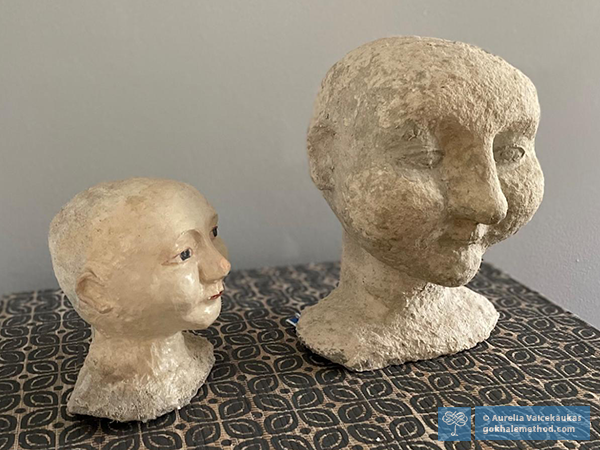
Since learning about healthy posture, our Gokhale Method Teacher in the Chicago area, Aurelia Vaicekauskas, has been remodeling the dolls she makes. The older head (left) still has a more curved neck and raised chin. . .the larger, more recent one (right) has a taller, straighter neck, and its chin angles down. . . You can learn how to gently align and lengthen your neck here.
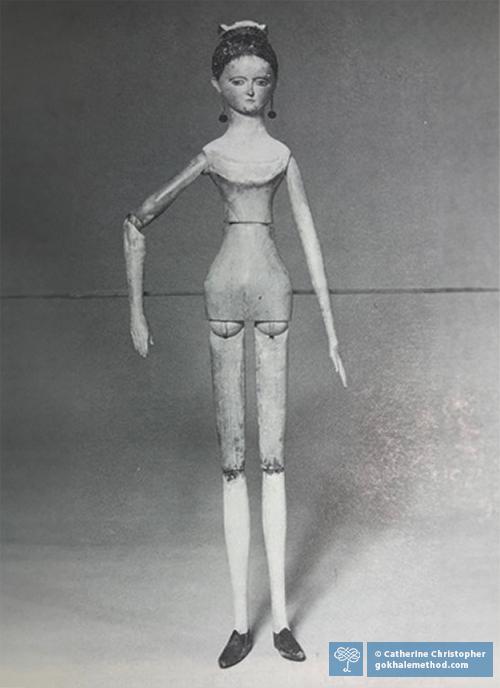
Aurelia notes that this antique Austrian doll from c.1850 has a typically tall, straight neck. (Image from The Complete Book of Doll Making and Collecting, by Catherine Christopher.)

A footballer doll by Schoenhut, 1915, U.S. These wooden dolls were the first in the world to have compressed spring metal joints and holes in their feet, which allowed them to be posed. Feet facing out rather than straight ahead was common until the second half of the twentieth century. (Image from The Complete Book of Doll Making and Collecting by Catherine Christopher.)
Baby Dolls
For many of us, girls especially, our first introduction to dolls is not the teen or adult doll, but a baby doll. Often, the characteristics of healthy posture which are so clear in infants, such as externally rotated legs, posterior shoulders, open chest, and a centrally balanced head, are particularly well observed.
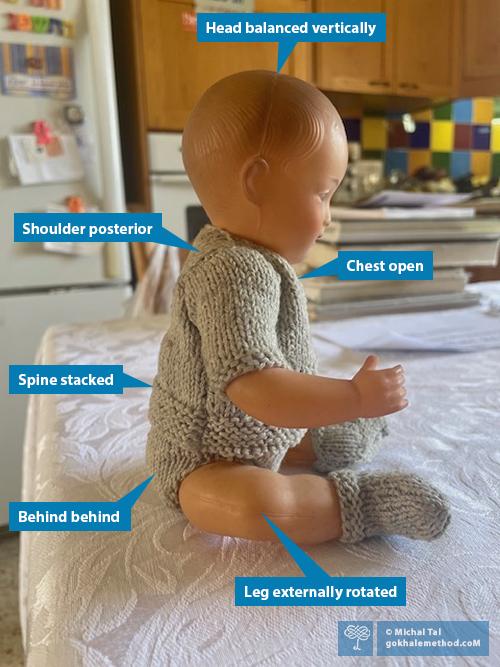
“I just cannot take my eyes off her”
Our Gokhale Method teacher in France and Israel, Michal Tal, was thrilled to find this little vintage doll at a flea market last year. It's from the 20s or 30s, and the arms and legs are attached with elastic. Its form and posture closely matches that of the baby below.

The styling of dolls often reflects natural baby proportions—like the relatively large head size and disproportionately small hands and feet—and exaggerates them. Capturing a figure’s essential characteristics and magnifying them is an important aspect of any doll's appeal, including when they are fantasy characters—or even aliens!
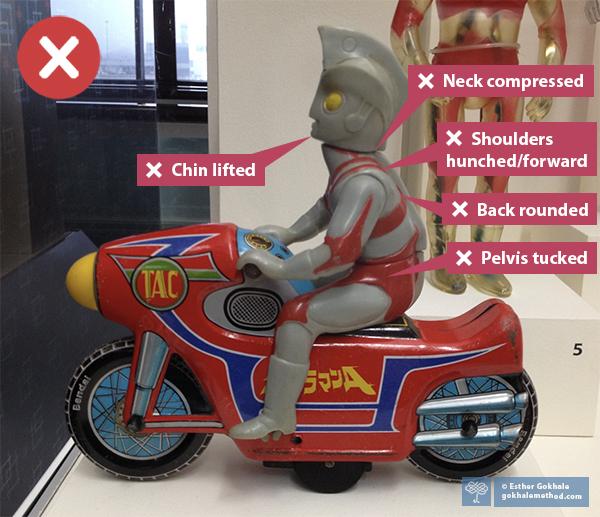
This 1972 friction-driven Ultraman Ace and motorcycle from Japan shows more typically modern, slumped posture. From Japanese Toys! Kokeshi to Kaiju, San Francisco Airport, Terminal 3, 2013–14.
Antique dolls generally reflect the healthier posture of bygone eras. By contrast, modern dolls, especially from the 1960s onwards, reflect the tucked pelvis, rounded upper back, and forward head carriage that we have gradually drifted into and which is now so predominant that it passes as normal for our species. Barbie is a welcome exception to this pattern.
Wonder Woman
One of our regular 1-2-3 Move participants, Anita Medal, is a longtime fan and collector of Wonder Woman, and has generously shared her passion with us.
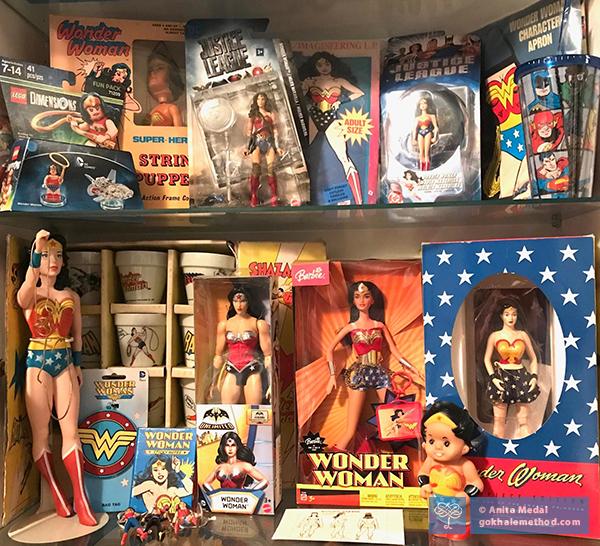
These dolls are just a small part of Anita’s Wonder Woman collection. It is interesting that some are modeled to have a more muscular, athletic appearance than others. Muscular contours, like the plumpness of babies, are much easier to replicate in modern plastics rather than wood.
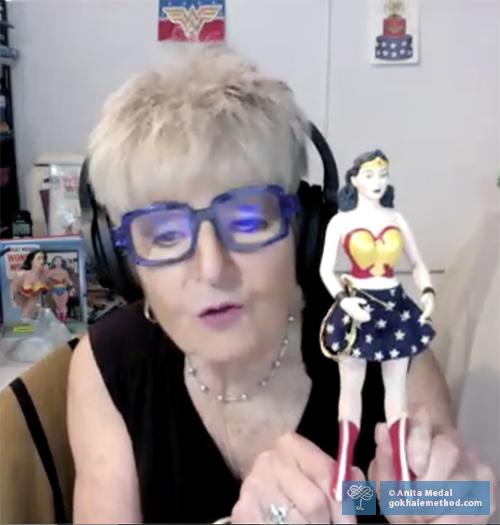
1-2-3 Move participant Anita Medal showing us her original 1942 Wonder Woman doll.
Anita explains the personal inspiration and support she found in Wonder Woman in this interview. She points out that this was three years before she started her 1-2-3 Move sessions and was able to make her posture healthier:
Anita admires Wonder Woman’s qualities:
She fights for goodness, she fights for justice, but also she is wise like Athena—she has intelligence. She has physical strength, which I think is important. She’s swift, like Mercury, she’s compassionate and caring. She's honest, but also, she is beautiful. I think beauty is important. She is the best that she can be.
Best next action steps for newcomers
If you would like insight on your posture, consider scheduling an Initial Consultation, online, or in person.
You can sign up below to join one of our upcoming FREE Online Workshops. . .

Comments
Add New Comment
Login to add commment
Login